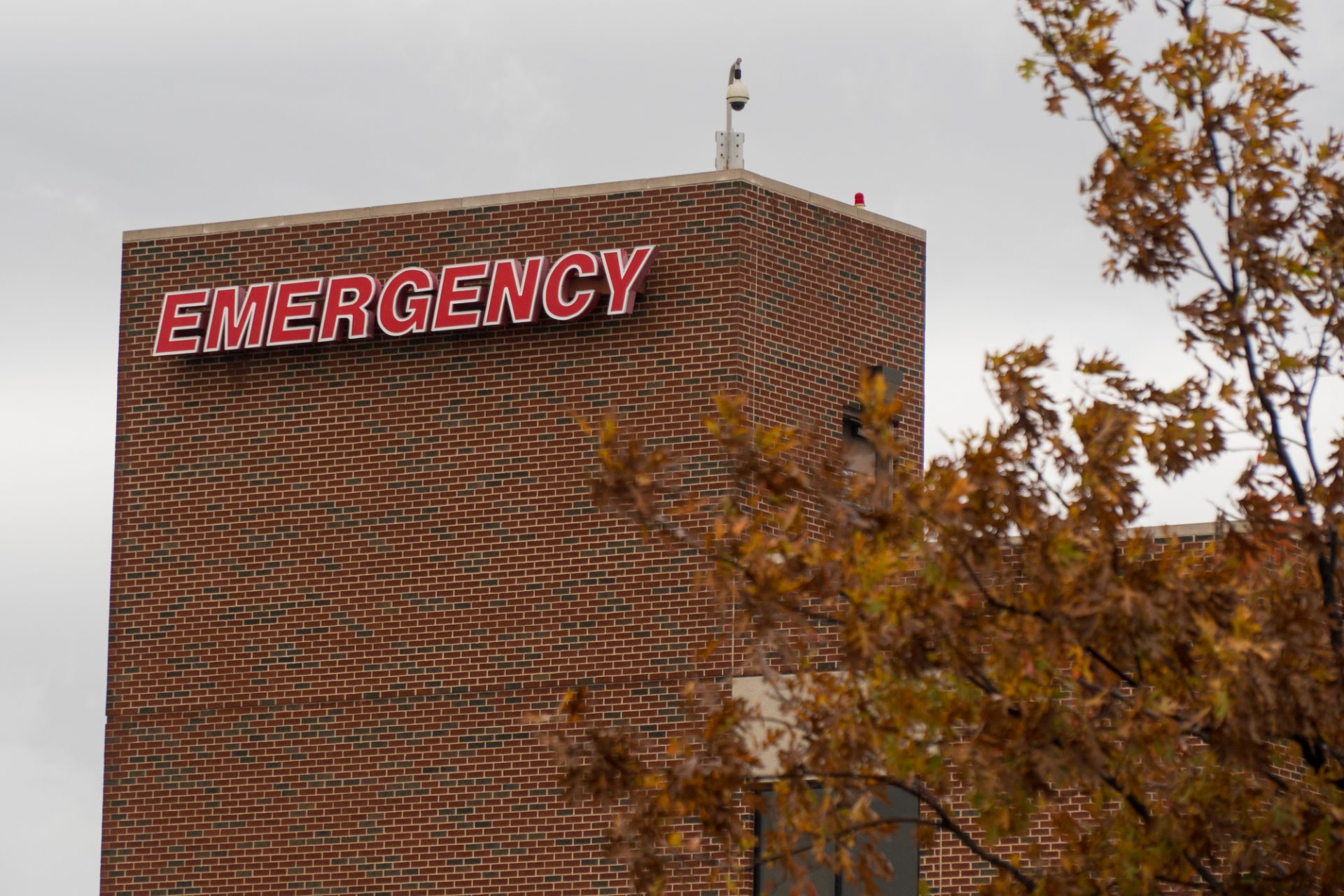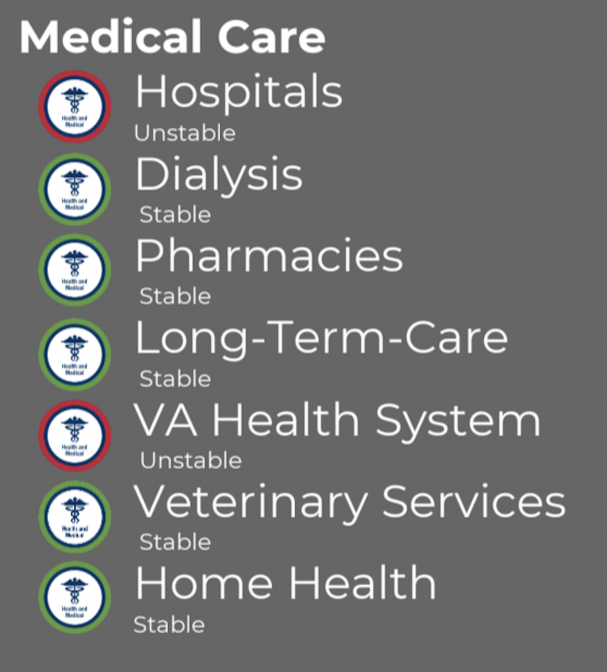
OU Health, pictured above, is one of many hospital systems experiencing strain amid the latest surge of coronavirus. (File photo)
Jackie Fortier / StateImpact


OU Health, pictured above, is one of many hospital systems experiencing strain amid the latest surge of coronavirus. (File photo)
Jackie Fortier / StateImpact
As coronavirus hospitalizations surge past 1,000 daily, Oklahoma health officials are raising concerns that the state’s hospital services are strained with no solution in sight.
In a weekly update to state agencies, the Oklahoma State Department of Health designated the state’s hospital system as “unstable,” stating that, “Services (are) disrupted and no solution (is) identified or in progress.”
When asked about the designation, the department provided a statement attributed to Deputy Commissioner of Health Keith Reed.
“That is a reference to hospitals reporting continuing staffing issues, bed availability issues, and the need to transfer patients,” the statement reads. “As such, we continue to work with them to find solutions that will ensure stabilization.”
Reed and other State Department of Health officials will hold a COVID-19 update briefing Friday. It will be the first formal briefing by the department since July 9.

A screenshot from the Oklahoma State Department of Health’s weekly briefing for state agencies shows hospitals designated unstable.
Throughout earlier peaks in the pandemic, Oklahoma health officials provided daily data on bed capacity in hospitals, including the occupancy figures for intensive care units statewide.
Because Gov. Kevin Stitt allowed the state’s emergency declaration to expire and has not issued a new one, the state Department of Health is not collecting that data the same way, and it isn’t being reported to the public.
Current hospitalizations mirror figures reported in late January, after the post-Christmas surge. More than 1,000 people are hospitalized with the virus in Oklahoma, and more than 300 of them are in intensive care units. In January, the health department’s daily pandemic reports showed that with similar hospitalizations, ICU vacancy rates hovered around 5% — 20 to 50 beds of about 900 available.
Data for the state’s current ICU bed capacity is not available, but medical experts have warned that it is lower right now than it was in the winter for a few reasons, including the lack of an emergency order, and a worsening nurse shortage.
Dr. Mary Clarke, a Stillwater physician and president of the Oklahoma State Medical Association, explained in a July briefing how an emergency declaration can contribute to more bed space. She used the Stillwater Medical Center as an example. During the worst of the hospitalization surge, that facility converted conference space into a non-COVID wing, shoring up traditional bed space for intensive care COVID-19 patients. She said that wouldn’t be legal under normal circumstances.
“A hospital cannot just randomly decide, ‘I’m going to make a hospital bed tomorrow out in the hallway,’” she said. “That’s not legal. An emergency use order exempts (hospitals) from some of these rules so that we can expand into places that are safe. No, I’m not saying we’re going to make a hospital room in the hallway, but many hospitals — probably most hospitals across the country — revamped E.R., revamped conference rooms, revamped cafeterias into hospital beds.”
That is not an option right now because Oklahoma has no emergency order.
Oklahoma was experiencing a nursing shortage long before the pandemic began. It worsened during the pandemic. COVID-19 patients drove up demand not only because of their volume but because they required a high level of care.
Throughout the pandemic, hospital administrators have reiterated that bed capacity is not static, and it is not based on literal bed numbers, but on hospitals’ ability to staff those beds. Without nurses to care for patients, many beds sit empty.
That situation continues to worsen, as nurses have quit due to exhaustion. Dr. Sam Ratermann is a physician with INTEGRIS Grove Hospital, and said during a July briefing that support staff such as nurses and even those who work in hospital nutrition have been leaving the field.
“I know that I’ve seen a lot of people leave health care completely, just very tired, very overworked, very exhausted,” he said.
Dr. Dale Bratzler, OU Health’s chief COVID-19 officer, said in an Aug. 1 briefing that capacity is again an issue in that hospital system.
“Remember, there are many other people in the hospital for other things,” he said. “At the same time that we have this tremendous shortage of nurses that actually would allow us to open up all the beds that we have in our facilities.”